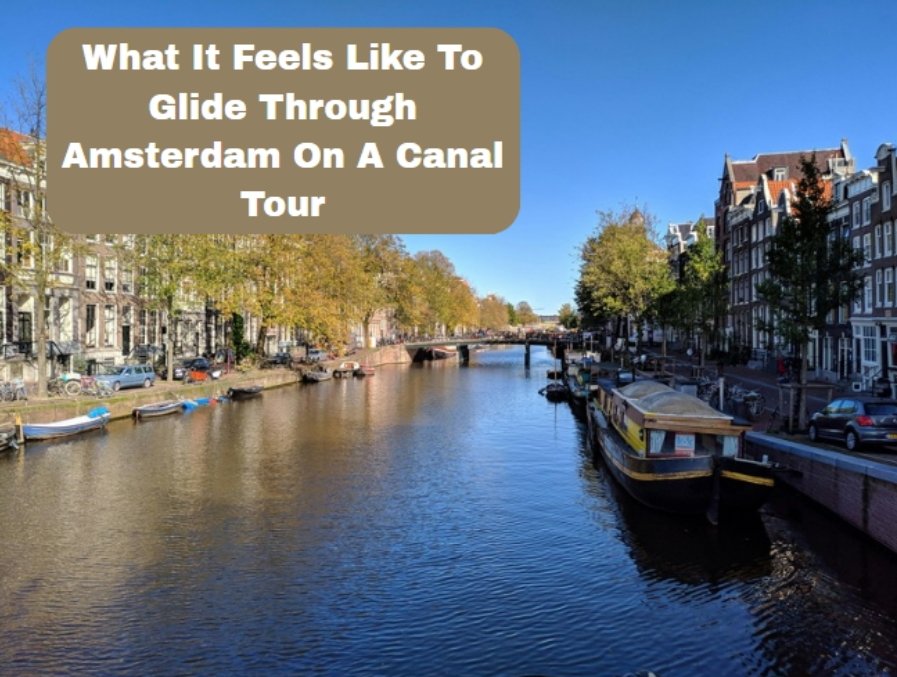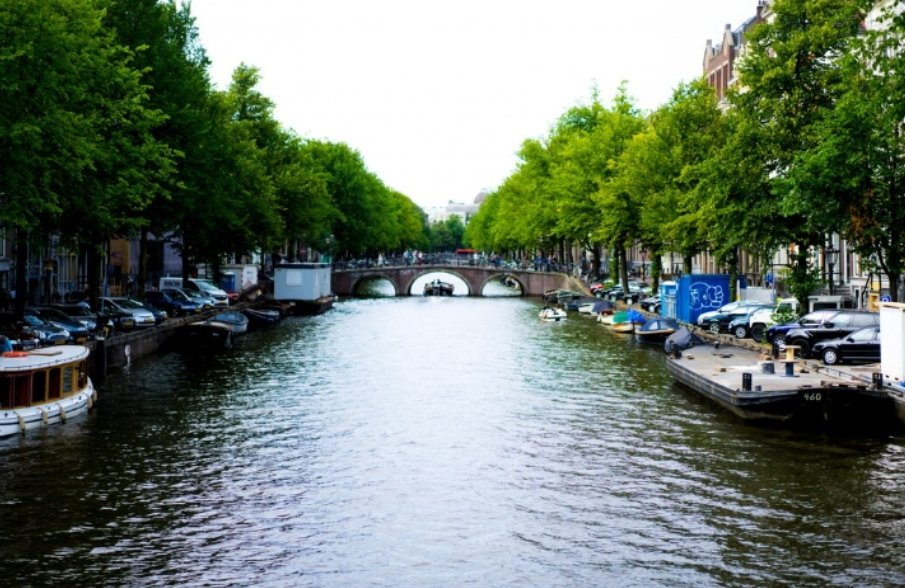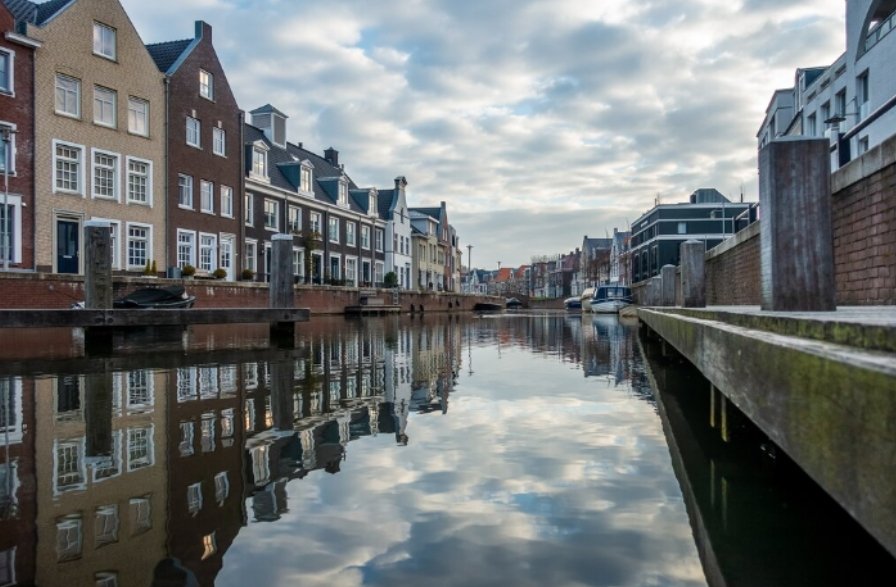Travel
What It Feels Like To Glide Through Amsterdam On A Canal Tour

There are few experiences in Europe that capture both serenity and vibrancy quite like gliding through Amsterdam’s canals. Low-hung bridges and gabled houses with crooked smiles pass by as time stands still while the boat putters on.
Ideally, the quiet buzz of the engine mingles with the occasional faint tinkle of a bicycle bell and the distant, low roar of townspeople on adorable cobbled streets. Floating tulips, golden light, and crumbling brick skitter across the water’s surface, each moment a life-size painting. A boat tour in Amsterdam is not so much sightseeing as becoming one. It’s a serene journey through a city that wears its history as a badge of honor, but throbs with an urgent rhythm of the here and now.
Whether it’s the spring rain taken in while on a covered boat or the summer sunset enjoyed, it is definitely Amsterdam’s landscape that no one ever forgets.
This article explores the Amsterdam canal tour in detail.
1. Beauty of Amsterdam’s Canals
When it comes to the canals of Amsterdam, they’re not just waterways; they’re the lifeblood of the entire city, dictating its culture, architecture, and daily pace.
Developed in the 17th century during the Dutch Golden Age, when much of this low-lying land was swamps and marshes, the system of canals was an act of city building designed to control transport and trade as well as defense.
Today, those same canals whisper stories of traders, artists, and dreamers creating a watery city that flickers with life.
An Amsterdam canal tour is one of the best ways to experience this history firsthand, gliding past centuries-old bridges and houses that seem to lean toward the water as if listening to your thoughts.
From below, as you walk under them, every bridge and building has a story to tell. The slanting, narrow houses lean forward to catch the whisper of your conversation as you pass.

2. City Through New Eyes
Amsterdam from the water is another place. On land, the city hums with life — cyclists pedaling by, the music of cafés. But from the boat, the same life sails in slow motion. The view changes — suddenly, the buildings are beautiful. The decorative detailing of the sides of the canal houses provides access to them, viewed best from the water in front. The beauty of them is doubled by the reflection, as of a city above a city.
As you glide past the Anne Frank House, the Westerkerk church, and the grand Herengracht mansions, the city’s history comes into context. You can almost see traders loading ships centuries ago or artists painting on the water. The calm of the canals, as opposed to the active ferment above, combine to create a feeling of peace that is Amsterdam all by itself. The city is old and new, solid and liquid all at once.
This flip is as much visual as it is emotional. Amsterdam, as seen from the water, is so human, its flaws and irregularities that much more lovely for their presence. It is an experience that leaves you with reflection, inviting you to tarry and look rather than merely see.
3. Transforming Beat on the Way
There’s culture running through every canal in Amsterdam. World-class museums, antique theaters, and music drifting from open windows drift past your boat. Stately arches of the Rijksmuseum and Dutch masterpieces border on water; modern glass of the Hermitage Amsterdam glints in the sunlight; floating markets, art museums, and brown cafés (Dutch pubs) all reveal a city that combines art with everyday life with effortless style.
And yet, here, culture is not only confined to building walls. It is in the laughter of locals aboard tiny boats on a sunset cruise, with their baskets of cheese, olives, and bottles of wine. It’s in the street musicians playing saxophones on bridges or the fragrance of stroopwafels emanating from stalls along canals. The level of creativity of this city’s heartbeat ripples in a canal.
The canals also act as open-air galleries at times: during the Amsterdam Light Festival, for example, their waterways are brought to life with illuminated art projections, glistening like corridors of fantasy.

4. Enchantment of Twilight on the Water
If there’s one particular moment of the day when you’ll be truly enchanted by a canal boat tour, then it has to be dusk. As the sun sinks below rooftop level, water starts reflecting the colors of the sky’s dying gasp — pale pinks, oranges, and purples. Lights blink on bridges, and they glimmer like liquid fire. The air grows eerie in its stillness, like a movie where the city holds its breath.
Couples huddle together under blankets, families tilt their heads in the direction of landmarks twinkling in the dusk, and solo visitors rest against the railing, lost in reverie. It’s a cold, windy, but it feels good. At such times, Amsterdam appears timeless, a tale spun for you alone. The play of light and shadow, of silence and motion, creates an intangible spell that remains with you long after the tour is over.
Conclusion
An Amsterdam canal cruise isn’t just a tour; it’s a trip down memory lane and through the heart and soul of Amsterdam. One by one, they draw you deeper into Amsterdam’s rhythm, from the graceful curve of its waterways to the whoosh of bicycles that streams past picturesque buildings and barely pauses at traffic signals. And you can see how water shapes not just the city’s form, but its character — drinking deeply from its past, bearing its present and foretelling its future.
By the time your boat brings you back into the harbor, you’re settled and refreshed. In the laid-back way it took you in, so does the city send you away—gracefully, beautifully, and with warmth.
-

 Celebrity1 year ago
Celebrity1 year agoWho Is Jennifer Rauchet?: All You Need To Know About Pete Hegseth’s Wife
-

 Celebrity1 year ago
Celebrity1 year agoWho Is Mindy Jennings?: All You Need To Know About Ken Jennings Wife
-

 Celebrity1 year ago
Celebrity1 year agoWho Is Enrica Cenzatti?: The Untold Story of Andrea Bocelli’s Ex-Wife
-

 Celebrity1 year ago
Celebrity1 year agoWho Is Klarissa Munz: The Untold Story of Freddie Highmore’s Wife
















